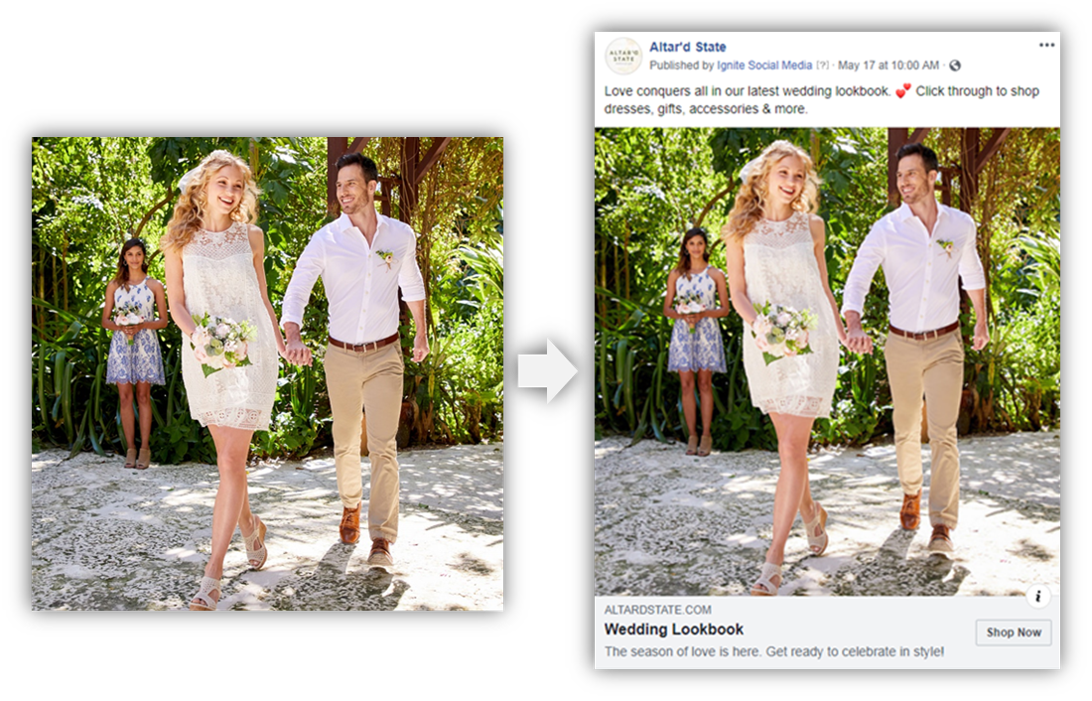
08 Jun How To Drive More E-Commerce Traffic and Conversion With Social Media
With more social ad unit choices, targeting, and creative approaches continually being released, it’s not surprising that many marketers still don’t know the right formula for driving e-commerce traffic and conversion through social media content.
Add to that the increase in e-commerce strategies being developed and adjusted as brands strive to succeed in a COVID-19 world. Consumer social media consumption and shopping habits have drastically changed in the last 90 days, and we’re all working to keep up with demand.
Because our social media agency is constantly analyzing emerging trends and social content performance for our clients, we’re sharing with you three key factors to consider when optimizing your social media strategy to drive increased e-commerce traffic and conversions.
Factor 1: Develop Social-First Content
In the effort to drive more website traffic and sales through your social media content, it’s easy to treat social channels as just another advertising channel. Often, this hinders content from performing as well as it could, simply because the creative slips into sales messaging or feels too ad-like.
Instead, we recommend you focus first on developing content that’s built with your target audience in mind.
- Chose a media format that quickly captures your audience’s attention
- Both the visual and copy should answer the question “what’s in it for me?”
- Optimize the content for the channel it’s being placed on
- Include a strong but natural Call-to-Action that is clear visually and through the written copy
Pro Tip: With the unique ability to see what creative is resonating and driving results, consider developing smaller batches of content and testing a minimum of two or three high-level creative approaches in each batch rather than creating content in one fell swoop. This will help you uncover whether your natural creative “hunches” are correct and may uncover unexpected insights.
Factor 2: Pick the Right Social Ad Unit
Too often do we see an amazing piece of creative in the newsfeed only to discover that it’s not optimized for the social ad unit it was placed into. Simple formatting issues will cost you money, which is the last thing you want to do.
To avoid this common mistake, we recommend planning your ad unit before the creative is finalized and picking a unit that aligns with your specific business objective. This will ensure that call-to-action buttons and link headlines are fully optimized for driving the most website traffic.
It’s also important to be nimble with your ad units. Consider testing new units or variations of existing ad units to understand the impact of the ad unit on your overall performance. We’ve often seen minor adjustments like adding a video to a Carousel ad impact the performance substantially.
Factor 3: Test the Targeting
Not only is it important to test your ad unit, but the targeting you chose is one of the most important factors in driving website visits or conversion at an efficient cost.
To fully understand the impact of targeting on your website traffic and conversion, we recommend you consider the following:
- Let the test run long enough to see results before you make changes. Conversions don’t happen immediately. If you are running ads on Facebook, you will want to make it out of the “learning phase”. The learning phase has no set duration. An ad set exits this phase after 50 optimization events since its last significant edit. It’s usually longer for ad sets that are slow to spend or garner optimization events. Once you are out of the learning phase, you will see the best performance for your ads.
- Consider testing custom audiences against new audiences. You’ll be able to see if new or returning customers are more likely to drive web traffic or sales.
- Remember look-a-like audiences. Once you have insights on which audiences are more likely to convert, get in front of more people like them.
Finally, compare the performance of your media spend across platforms and apply the knowledge you already have about your customer journey to the time period you are analyzing. In this case – don’t be too short-sighted. You may drive efficient website visits that convert to smaller value sales, or you may learn that a particular platform is less efficient but drives higher-value sales.
If you’re warry about these best practices, don’t be. By utilizing the insights above, our team increased conversions from social media by 29% for one our clients, and with only 50% of the ad spend from the previous year.
If you have specific questions on how you should be adjusting your social strategy for e-commerce, contact us and we’ll be happy to help. You can also keep yourself up to date on the latest news and trends in social by subscribing to our bi-weekly newsletter, social you should know, below.









